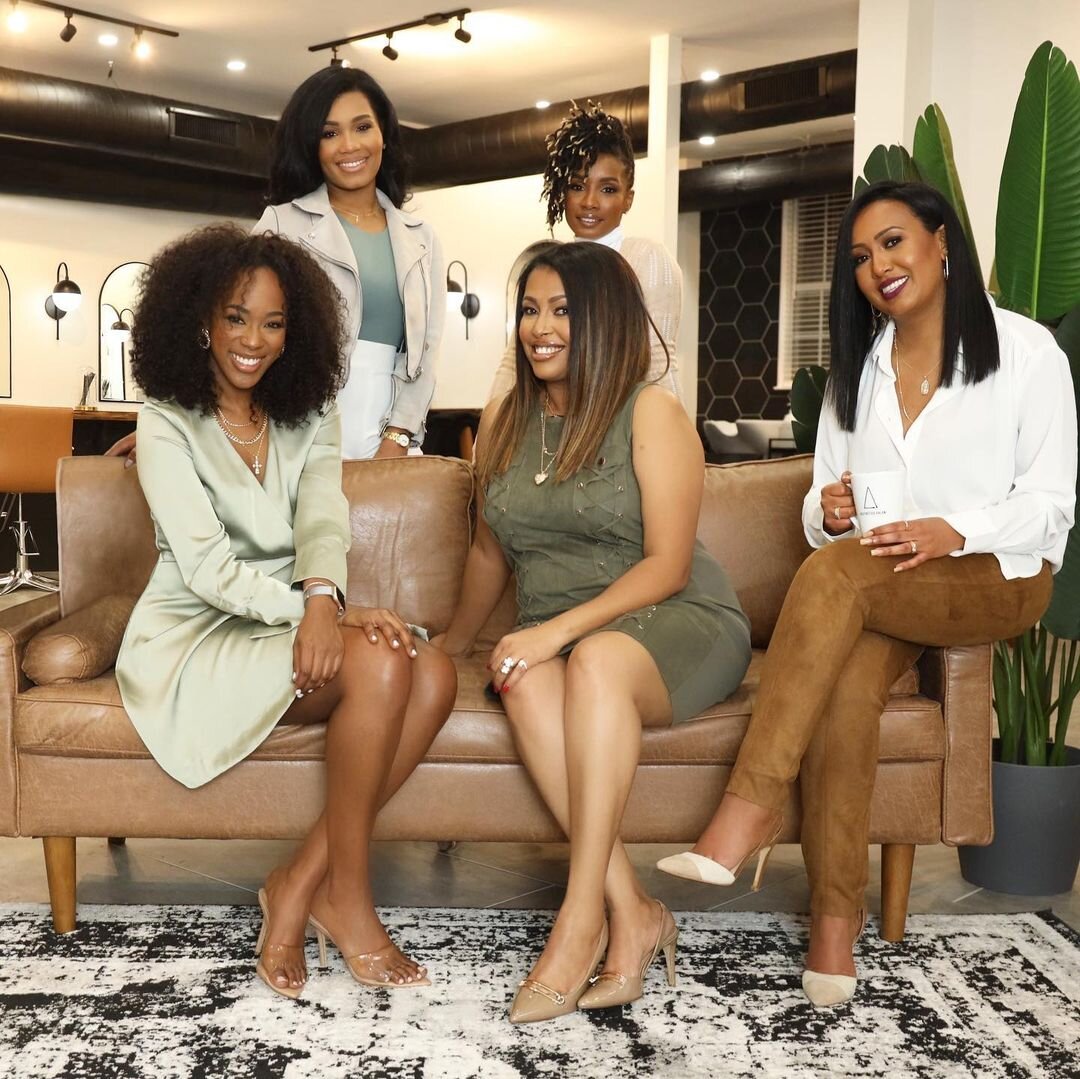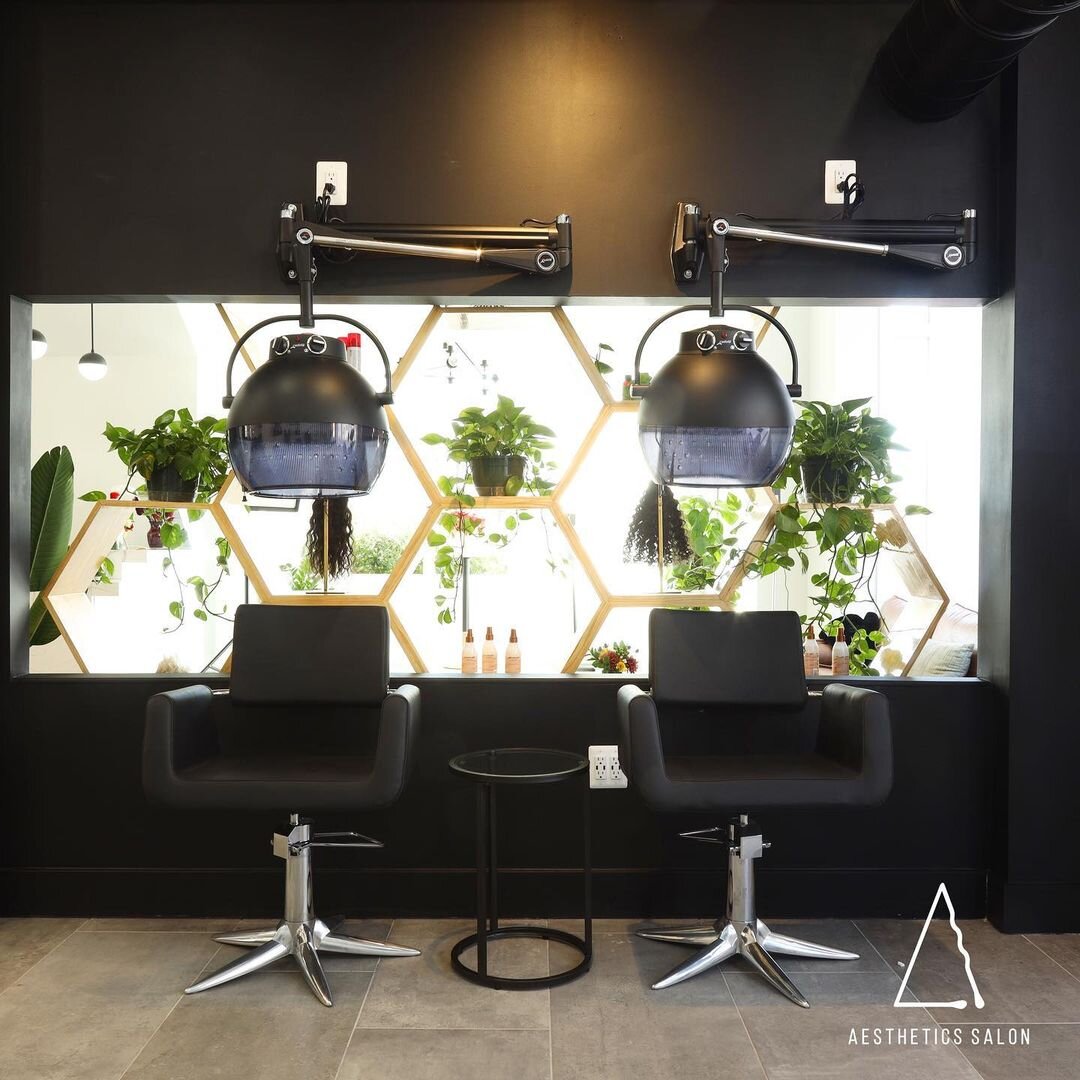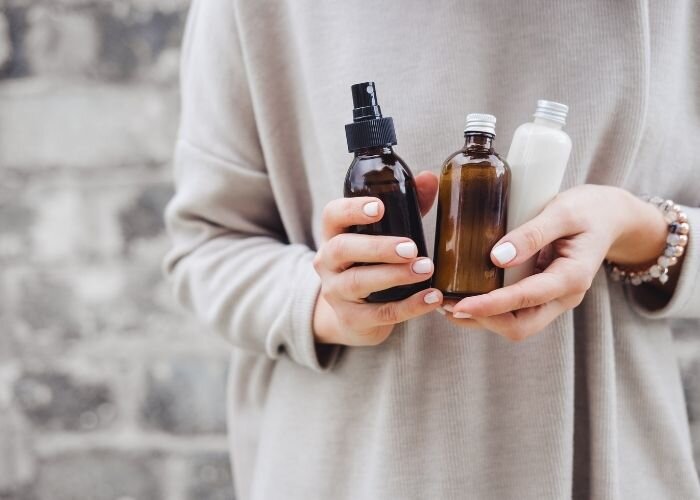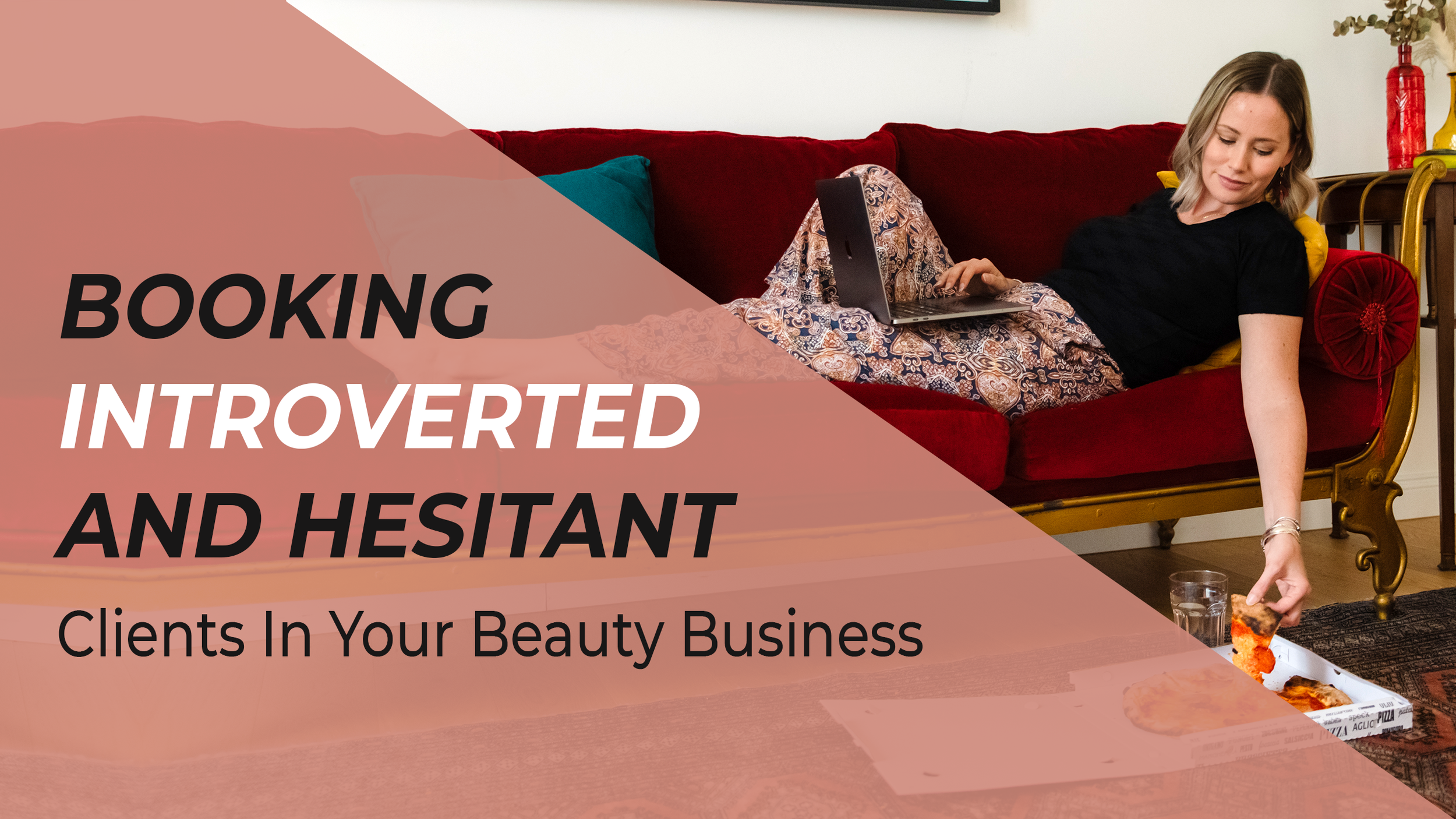How to set up successful brand partnerships in your beauty business
Brand partnerships: what are they? How do they work? Are they profitable, or a waste of your precious marketing resources? Today, we’re covering it all, and we’re covering it in style, with the beautiful and wise Yene Damtew.
First up, though, let’s take a look at your current financial situation - specifically your revenue. Is it all coming from one place, or have you caught wise to expanding the places and ways you can make money in your beauty business?
One of the best ways you can grow your revenue is by creating new streams - meaning, making money doing different things than just working in your salon. One of the many ways to do this is by partnering with beauty product companies that you know and love. These companies sponsor beauty businesses like yours, as a way to drum up attention for both of your brands.
The most popular and successful way to do this is by creating sponsored content on social media and streaming platforms like Facebook, Instagram, TikTok, and YouTube.
Real money-making content is informative, inspired, creative, and seems effortless, but is actually well-planned and executed. This kind of sponsored content introduces new products, trends, benefits and tips - like an infomercial, but much less pushy, as it genuinely provides value and education for your audience.
And no one does educational, money-making content better than Yene Damtew.
Yene Damtew is the founder of Aesthetics Salon in Arlington, Virginia. Originally from Los Palmas, Yene has called Arlington her home for the past 11 years. Educator, hairstylist, CEO, path-forger and passionate creative, she wears many hats, and she’s a delight to share time with.
Oh, and she’s also former First Lady Michelle Obama’s personal hairstylist, having traveled worldwide for six months with her pre-pandemic during Michelle’s book tour. Swooooon!
Yene has enjoyed success across all avenues of the industry: in film, print, and fashion, and she’s distilled every lesson she’s learned into a curriculum that has helped hairstylists take action to scale up their successes.
One of Yene’s strongest messages to her students, peers, and influencers in the industry is that it’s important for all beauty business professionals to set up multiple sources of income. It’s not a surprise that this message particularly rings true for salon owners, hair stylists, and estheticians since the 2020 lockdowns when they were literally not allowed to work at their craft.
“It's so important that we have multiple revenue streams, and it's something that I stress in my program or to any peers or freelance artists. As creatives, we provide services. So we think, okay, if I'm not providing services, how do I generate revenue?”
Yene encourages all of her hairstylist mentees, co-workers, and peers to branch out and explore other realms of the beauty industry, using their creativity to think differently about opportunities available to them.
“For salon owners, it could be being an educator for a brand. It could be your own private classes. It could be retailing of your products. It could be hosting classes or starting partnerships.”
Yene practices what she preaches when it comes to exploring and developing different sources of revenue for beauty business creatives, especially when it comes to brand partnerships. She’s partnered with brands like Indique Hair Boutique and DevaCurl and has had fruitful relationships with each.
I asked her to share her trade secrets on gaining and maintaining mutually beneficial brand partnerships, and she had a ton of wisdom to share.
Step 1: Identify a brand you appreciate and align with
Yene says that some beauty business owners that seek a brand partnership have the wrong focus when it comes to a brand partnership, looking for a paycheck instead of fostering a relationship with a brand that aligns with your own. And ideally, says Damtew, a brand partnership should be with a brand you’re familiar with.
“One of the brands that I've partnered with is Indique Hair Boutique. It was an easy sell and an easy partnership. Because when I approached them, I knew about the brand because it’s a brand that I use. I could tell you about what types of hair textures that they use. I could talk about results and features and benefits - what I love about it. The brand was surprised because they saw how authentic I was and they could tell, okay, she's not just selling something, she's passionate about it. And that's the difference.”
As well, Yene says, consumers can definitely tell the difference between a product you’re getting paid to use, and a product that’s part of your routine line-up. And if they see you promoting something that’s not part of your daily service offerings, that can leave a bad impression.
“I've seen it happen where someone comes in and [notices] that you say that you use this product, but that product's nowhere to be found or it's in the back. They came to you because you are an advocate of whatever product this is, but when they come in and you're not using that, it leaves your consumer to question how honest and truthful you are. And you have to remember that if you start to put doubt in your consumer's heads, they're never going to believe what you have to say.”
To help with finding an ideal brand to partner with, Yene says to ask yourself questions like these:
What does the brand represent? Do their business practices and beliefs align with yours?
Do you use their products? Are you aware of the pros and cons of working with their products?
Are their products the type that you advocate for in your salon? (ie. chemical-free, green and clean, etc.)
Do you have similar goals in business? (ie. changing the landscape of natural hair care, supporting charities, etc.)
Do you share similar target markets?
Finding the answers to these questions will make it obvious if a brand partnership is right for you. The more similarities and alignments you have, the more likely a brand will accept a partnership when it comes time to pitch a deal, and the more successful your partnership will be.
Step Two: Pitch yourself and your business to your chosen brand
Yene says that above all, you should enter a pitch with the answer to the biggest question any brand will have: what value can you bring to their business?
“Where is there a need that you can fill for them? If you're using their products, you could add value because you know it through and through,” says Yene.
“When I pitched myself to DevaCurl, I sent them a message and said, ‘Hey, I use your product. I took your training. I know that there isn't a rep in the local area. And I would love to work with your brand. I also noticed that on your social media, you guys really don't educate the professional side or show tutorials to the super curly market.’ I was very specific on what I could help them with - a market that they weren't catering to. And I told them I could help them reach that demographic because that was my clientele.”
Once you’ve identified how you can brand value to a partnership, you need to be specific about how you’ll get there. In Yene’s partnership with DevaCurl, she developed social media content to educate and promote DevaCurls products - which in turn sold more products and built better brand awareness for the business.
Yene says that when you enter a pitch, you must have a solid grasp of what you want in return. It’s an uncomfortable position to be in for both yourself and the brand you’re pitching if you don’t know what you’re asking for in terms of money or discounts. Yene has a formula for figuring out your terms.
“I call it the Pixie Pitch Formula. When you pitch to brands, you must have a number already in your head with what you want in return. The Pixie Pitch Formula is ‘Product Insight x The Influencer’s Experience = The Price’. That's why I say work with the brand that you’re already an advocate for. Pitch yourself for a brand that you already know. And then your experience, your influencer’s experience with educating people adds value. It holds weight when you can say ‘I already talk to this market. I already know what I'm saying.’ So there is no doubt in the brand’s mind of whether or not they align with you.”
In terms of how to deliver a pitch, Yene suggests sending over what is essentially a digital portfolio (she calls it an EPK - Electronic Press Kit) that explains who you are, what your brand vision and beliefs are, and your history as well as where you’re headed.
“The thing that’s most important is that people want to feel like they could connect with you. That's what partnerships are all about. People are using influencers because they want to be able to connect.”
Yene’s EPK includes a healthy portfolio of her work, pictures of her salon and clients, press mentions, information about her target market, and brand story. As well, her EPK has a Work With Yene page where she lays out suggestions for how this partnership could work - examples of content that could be created, and shared goals for two brands.
Most importantly, at the end of her EPK is a Personal Statement that summarizes the goal of your beauty business and your personal career goal.
“My personal statement, something that I'm an advocate for is continuing education. So I added a personal statement, ‘I believe in education and creating a community within the world of hairstylists. We must continue to grow, learn, and lay the foundation for those that come after us.’”
“That's so important,” Yene continues. “That’s where you reel them in. Again, if you are working with a brand that aligns with who you are, then that personal statement should align with that brand's mission as well. If a brand is big on continuing education, then that's why they're looking for influencers to educate people as well.”
Finally, Yene says, be sure to include your social media stats for your potential partner to see where you’re at. It’s important for a partner to know how big their influencer’s reach is - but surprisingly, it’s not the number of followers your account has, but how much engagement your account drums up that really matters.
“When I started working with brands, I had less than 10,000 followers. What mattered was that my engagement rate was so high. People throw up content all day long. There are people that have hundreds of thousands of followers, but their engagement rate is very low - and engagement rate is what converts.”
Step Three: Secure the brand partnership deal
Once it’s obvious that your pitch has gone well and a brand partnership is within reach, it’s time to get them to agree to terms. Yene says that the most important aspect of this final step in making a deal is that both sides clearly understand who is responsible for what, ownership rights, and expectations from both parties.
“You lay out the terms that you want, such as how long the agreement is going to be. If it's an exclusive or a non-exclusive deal, what you are expected to do, who has rights to your content after it posts. You have to make sure that you understand who owns that. How long will the brand have rights to the content, if it doesn't live forever and what are your exact deliverables? And what happens if either party is in breach of the terms?”
Once an agreement has been made and signed away, a fruitful partnership can begin.
But what happens if a brand doesn’t want to have a partnership after your pitch? Yene shares her experience and what she learned about determination, facing rejection, and patience.
“When I first reached out to DevaCurl, they didn’t want to work with me. But I [said to myself], that's fine. It's okay. The time will come. And then I tried again and then they wanted to work with me. You can't get discouraged when you don’t hold a grudge. If a brand doesn't want to work with you, they have their reasons. Just believe in yourself.”
Is a brand partnership worth the work?
We see lots of statistics about how fast the influencer marketing scene is growing, and based on its popularity, there’s clearly a draw to get involved in it. But I wanted to know from Yene herself, how much money can an esthetician, nail artist, sunless tanner, or hairstylist make in a brand partnership? Her answer was reflective of her outlook in business: it’s all about playing the long game and giving your all.
“That's where the negotiation happens. Sometimes brands come out straight up and say, ‘This is our budget. Can you work with it?’ And then you make the decision because maybe working with it now will lead to something bigger. And you have to remember when you're getting into this, you don't want to outbid yourself or out-price yourself. You want to create long-lasting relationships because $200 paid multiple times over the course of two years is better than a one-time fee of $400.”
“Maybe you lowball yourself in the beginning, but if you under promise and over deliver, they see the quality of work. They'll pay you more the second time.”
Ultimately, building strong connections, relationships, and shared goals in the beauty space will always be worth putting in the extra effort. Networking with other beauty businesses and brands is a winner’s strategy, and by diversifying your revenue sources, you’re setting yourself up for success in the future, no matter what comes.
Until next time, keep making moves!
Xo,
Stephanie








